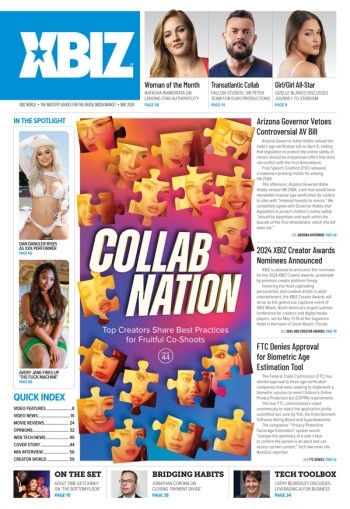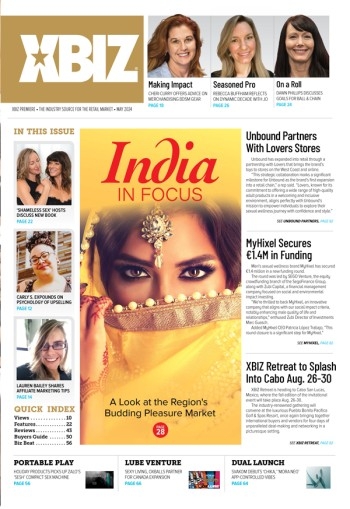Throughout the history of adult content online, screen resolutions have been debated at every step along the way. Is it too soon to switch to 1024x768? Does a responsive design for mobile really make a difference? The answer to every question along the way has been a resounding yes in hindsight.
It was always better to account for the possibility of clearer images and better display options.
You can watch any YouTube video you want on your big screen right now, and Google has already started allowing content to be streamed in 4K from their service for free.
Still, it will likely come as no surprise that many studios are currently ignoring the signs pointing toward an explosion of 4K Ultra HD video adoption in the near future. Adapt or die always sounds so simple in hindsight, but here is what an adapt-or-die moment actually looks like as it comes towards you like a freight train.
4K TVs have been coming onto the market online and in big-box stores like Costco to Best Buy for a year or more with the standard chorus of naysayers complaining that there isn’t any content available to watch in 4K so it won’t really catch on.
These are likely to be the same naysayers who voiced similarly wrong predictions about the move to 1080p because TV at the time was not being broadcast in HD. What happened in hindsight is that the ability to display content in HD is what moved the content market to the higher format. In fact, many channels are still not available in HD but you’ll have a very hard time finding a non-HD TV available in stores, which gives a distinct advantage to channels that do provide HD content for those interested in watching it.
A big enough advantage in fact that billion-dollar companies like DirecTV have centered their entire national ad campaigns around the notion that they offer the greatest number of HD channels available on any platform.
Some might argue that what works for a TV provider isn’t the same as what will work for a web content provider. That’s because those people fail to notice the rapid convergence of all content into a single always-accessible stream of data. Set-top boxes and devices like AppleTV, Chromecast, Roku and others have transformed smart TVs into Internet viewing portals as well. You can watch any YouTube video you want on your big screen right now, and Google has already started allowing content to be streamed in 4K from their service for free.
Others might start saying that people don’t really want to see things that clearly or that they lack the eyesight to be able to see a discernable difference. Those are people who may not have seen 4K video in action yet. The human eye can see a rough approximation of 576 megapixels in clarity. The way the eye sees is far more complicated than any megapixel count can accurately express, but it is a sufficient way of explaining that 4K is not the ceiling of digital clarity, in fact it’s not even inches off the floor if you consider the fact that one day we will be unable to see the difference between looking at a screen on a wall and looking out a window.
Gizmodo did a fantastic writeup with an accompanying video by Vsauce to explain the complexities of the human eye, which is well worth watching and companies like Ambarella (AMBA) are already hard at work on getting beyond the 4K cameras available today in millions of cellphones, GoPros and other handheld devices.
Now the big brands are putting significant resources into pushing 4K forward with Netflix making top shows like “House of Cards” available in 4K for customers and Apple recently unveiling an iMac with a Retina 5K display for professionals and home video enthusiasts — or anyone else who wants to see their screen more clearly than was previously possible. That’s more screens, more mainstream content and more money being poured into the kind of broad based marketing methods that will make 4K the “must have” technology of the next couple years at every new device launch party.
So, what’s the downside of continuing to shoot adult video for HD? Well, take a look at some of those 640x480 videos you never watch anymore or try watching “Frazier” on Netflix with your 70-inch flat screen TV in its square SD format with void areas down each side of your display. Anything feel old or dated about that content? Don’t get me wrong, “Frazier” is a great TV show. Perhaps one of the best ever filmed. However, had it been filmed and remastered as 1080p it would hold up against time a whole lot better than it does now.
Higher video formats aren’t only a way of making your videos more enjoyable to watch, they are also a method of future-proofing your content so that it continues to feel fresh and new months or years after it was first filmed. There is a reason why classic porn looks so old, and it goes way beyond the legwarmers and giant hoop earrings the girls wore. Lighting, cameras, shooting techniques and editing abilities have each skyrocketed to new levels of technological success and any savvy producer understands that any ability to do better also comes with a responsibility to adapt.
The cost of shooting in 4K is shrinking just as rapidly. Cameras and gear can be bought for hundreds, not thousands, of dollars these days. Storage costs peanuts compared to what it once required and the bandwidth costs can be passed on to end consumers by offering tiered pricing or pay-per-scene models that give consumers the choice of which format to download for themselves. Most importantly of all, even if you continue to display with a limit of 1080p, having the raw footage ready to be shown at 4K gives your catalog the ability to keep pace with the times. However, as many already know, the extra work involved in going back to put your 4K content live rather than just making it available with each new update along the way is something to also consider.
If you sit down and think about it you will come up with plenty of reasons not to be 4K ready right now. It’s always easy to come up with a list of reasons not to do something. Then again, you should be seeing the adapt-or-die freight train coming right at you in 4K clarity now… and waiting on the tracks until it actually hits you is not a sound business strategy.
Stewart Tongue is a writer and professional SEO marketing consultant for leading brands. His work also includes a consistent focus on the ethics of online commerce. He owns and operates a network of more than 700 active websites.





